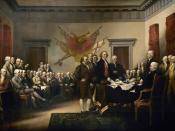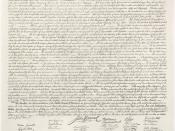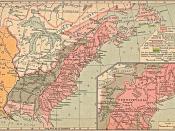Life, liberty, and the pursuit of happiness were explicitly stated by our founding fathers in the Declaration of Independence as unalienable rights that the government was to secure. The Declaration of Independence was the foundation of the American Revolution and the protection of those unalienable rights became the center of the ideals of the American Revolution. Half a century later, reformers concerned with abolition, women's rights and education helped to fulfill these ideals during the 1830's and 1840's. The reformers represented a fulfillment of the ideals of the American Revolution by demanding that the rights to life, liberty, and the pursuit of happiness be protected for all Americans in three ways: accessible education for the poor, the liberty of blacks and the equality of women.
Horace Mann's report to the state legislature in 1849 showed some of the reasons why his ideas of education reform were congruent with the ideals of the American Revolution. Mann was the secretary of the Massachusetts Board of Education in the 1830's and 1840's and the leading advocate of taxpayer-supported schools. He declared that education was "the great equalizer of the conditions of men, the balance-wheel of the social machineryâ¦It gives man the independence and the means, by which he can resist the selfishness of other men. It does better than to disarm the poor of their hostility towards the rich; it prevents being poor." Mann outlined the benefit of a strong educated population, aside from the immediate benefit to the nation's schoolchildren. Equality was one of the most important ideals of the American Revolution, and Mann described that if the nation had an educated youth, it would have a more equal society. At that time there was a large poor working class that reported to a small, elite rich group for...


